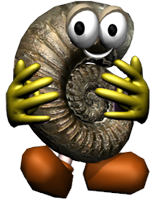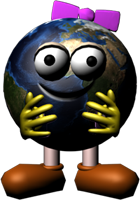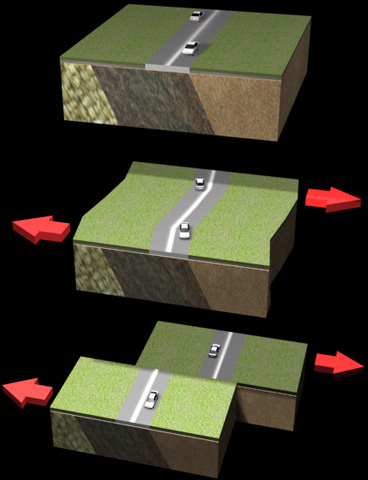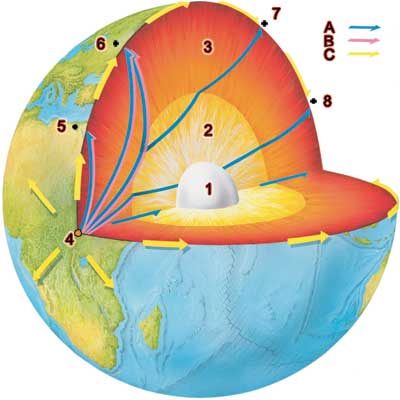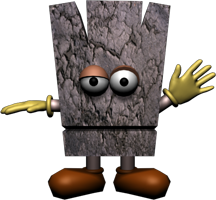
Earthquakes
Hi! My name is Eddy and I am going to tell you all about the shaky world of earthquakes!
The rocks  that make up the Earth’s crust are pushed and pulled in different directions.
that make up the Earth’s crust are pushed and pulled in different directions.
Sometimes, the rocks aren’t strong enough and break causing the Earth to shake — an earthquake.
This is like if you bend a stick, it will bend so far then snap all of a sudden. The line where the Earth's crust snaps is called a fault.
Faults are shown on geological maps  using a thick black line like on this map.
using a thick black line like on this map.
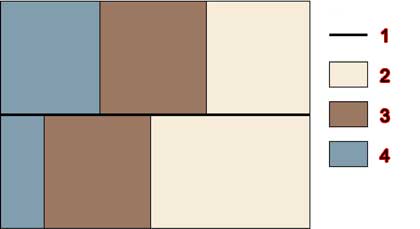
Click to view larger and see the legend.
- Fault
- Sandstone
- Mudstone
- Limestone

Earthquakes can cause a lot of damage to buildings. This picture shows the result of an earthquake in Turkey.
Can you see the black fault lines on this map of the San Andreas Fault in California? Faults are long breaks in the rocks that make up the Earth's crust.
More information
When an earthquake occurs, it creates shockwaves which are a bit like the vibrations you feel if you hit a drum. These shockwaves travel through the earth and can be measured using a seismometer and are recorded on a seismograph. Click on the globe picture to learn about the 3 different types of shockwave and how they travel through the earth.
Earthquakes cause shockwaves
Shockwaves travel through the Earth in different ways and can be measured by scientists to work out the size and location of the earthquake.
- Compression (P) wave
- Shear (S) wave
- Surface (L) wave
- Inner core
- Outer core
- Mantle
- Mongalla earthquake, 20/05/90, magnitude 7.1
- Cairo
- Moscow
- Anchorage
- Hawaii
Get involved
Have you experienced an earthquake? Do you live in an area where earthquakes happen a lot? Tell us how it affects your life and how you feel about earthquakes using our online form.

Let’s see what else we can find out about earthquakes. Try searching the internet for:
- earthquake
- earth's core


